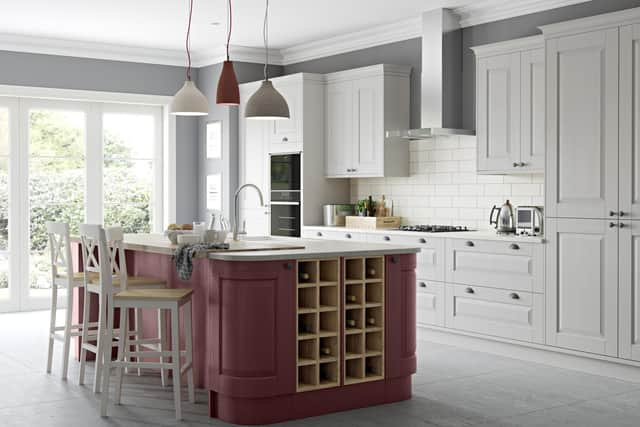Kirsty McLuckie: how science in home design can maximise wellbeing
Thus the golden rule in the kitchen of a short-sided, unimpeded triangle between fridge, stove and sink was born to make food prep, cooking and washing up flow better.
But neuroaesthetics – the recent study of how art can measurably change the body, brain and behaviour – is increasingly being applied to interior design too.
Advertisement
Hide AdAdvertisement
Hide AdNeuroaesthetic researchers believe that the way we design our homes can have the ability to improve our mental health and wellbeing, just as ergonomics helps us with our physical health and energy of movement.


Kitchen designers are taking note, and far from being a passing trend, the ideas are gaining popularity throughout the world.
UK manufacturer and fitter Masterclass Kitchens has researched neuroaesthetic tactics used by global designers and come up with a list of considerations which might make your kitchen help you feel good.
Firstly, the space has to be right. Most homeowners design rooms with a bottom-up approach, shoehorning a piece of furniture they love into a space that wasn’t designed for it. Neuroaesthetic designers, however, canvas for a top-down approach, pushing first for optimal architecture, then filling the space with purpose-built items.
Accessibility is key, as Dr Sacha DeVelle, a principal research fellow at the Australian Council for Educational Research, explains. Enclosed rooms restrict mobility and “can trigger a fight or flight response.” Hence, if you want to optimise a kitchen for human brain chemistry, start with freedom of movement.
Next you need to consider the space’s natural elements, asnature-infused spaces have been found to soothe frazzled brains. As designer Nikki Hunt, based in Singapore, explains: “It requires more blood flow to the brain to process man-made shapes, and that’s why we find it more relaxing to look at a natural view.”
So, utilise a wooden worktop, distribute stone ornaments, and hang plants in your kitchen where they improve stress levels. Just make sure you don’t overdo the pine cladding, as psychologists have also deducedthat rooms with over 45 per cent wood surfaces start losing their stress-busting effects.
Shapes are also important with too many straight lines and right angles discouraged. Instead, try introducing curves and texture. Consultants at London-based Biofilico Wellness Interiors explain: “Studies have shown that spaces with a moderate level of visual complexity, characterised by a balance between order and variety, are perceived as more aesthetically pleasing. Such spaces engage the brain without overwhelming it, leading to increased comfort.”
Advertisement
Hide AdAdvertisement
Hide AdMeanwhile, research presented in the Colour Research & Application academic journal in the US reaffirms colour theory: blue calms the brain; yellow energises us. Studies agree high ceilings encourage creativity, while low ones stimulate focus.
The advice from Masterclass Kitchens is not to let neuroaesthetics completely dictate your kitchen design. Instead, the ideas can inform and help you create the perfect kitchen, for you.
- Kirsty McLuckie is property editor at The Scotsman.